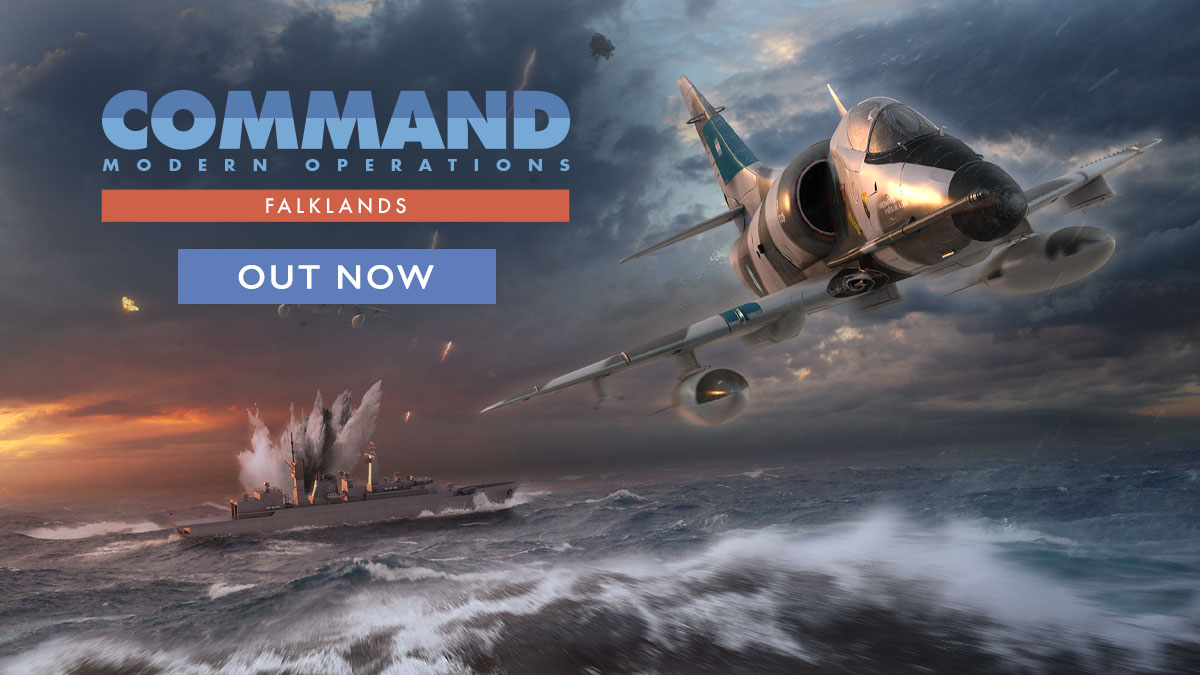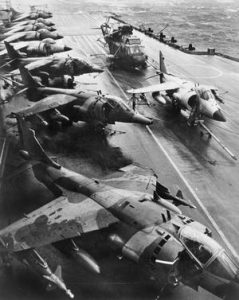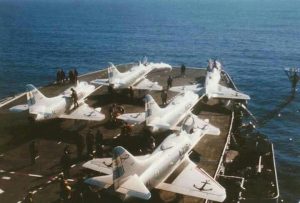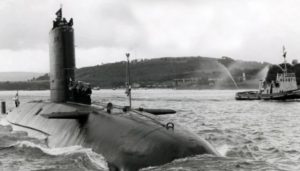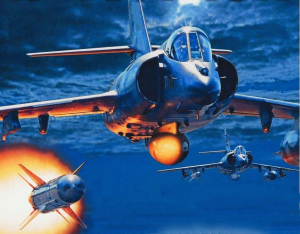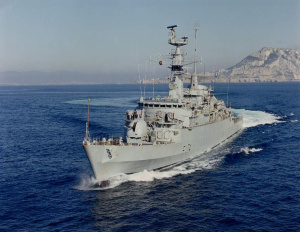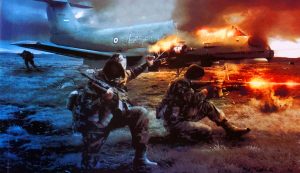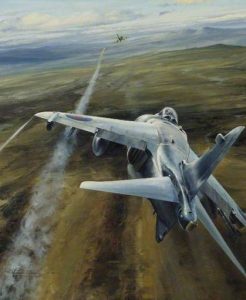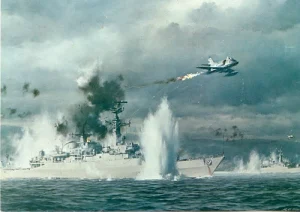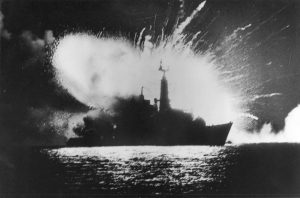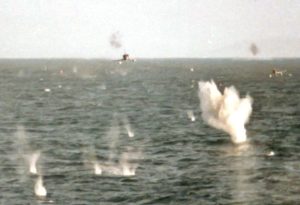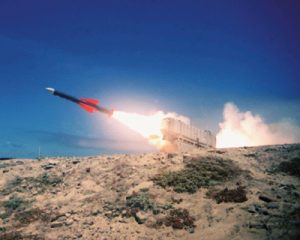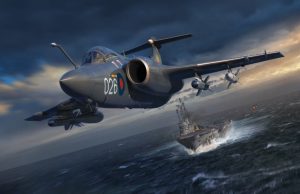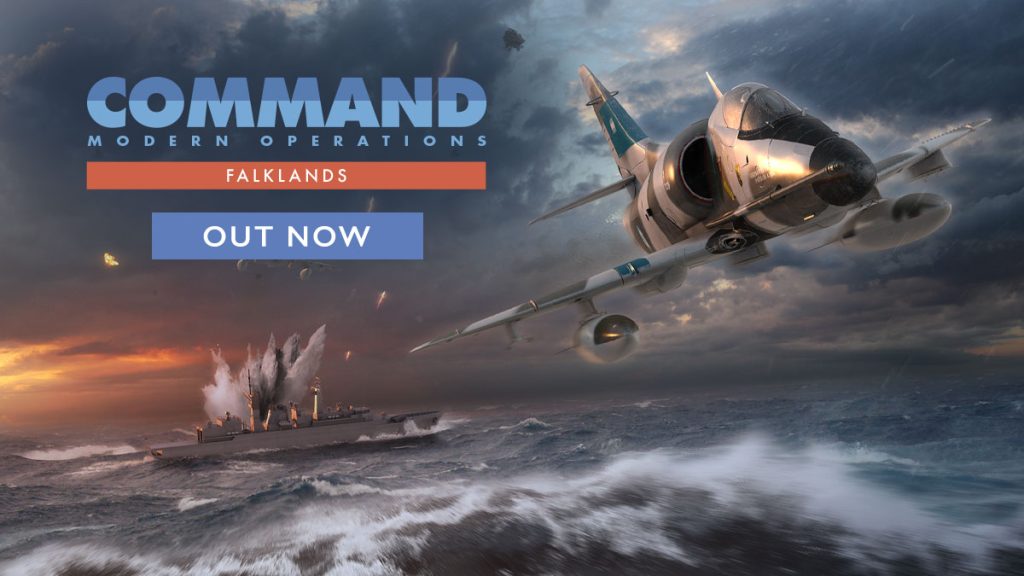Command: Falklands released!
Available at Matrix store (+Steam key), Steam and elsewhere.
The scenarios of the Falklands campaign
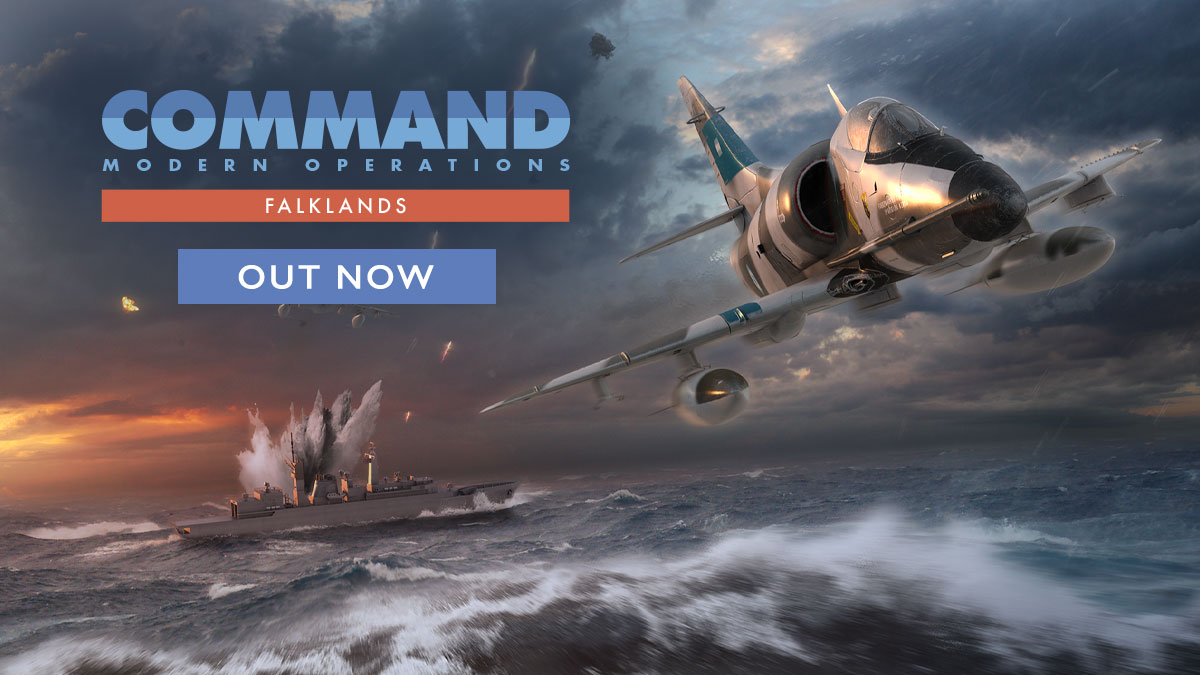 The release of the new “Falklands” campaign pack is getting closer.
The release of the new “Falklands” campaign pack is getting closer.
As always, this release will be accompanied with a new CMO update with the latest database versions.
Let us take a look through the scenarios in this historical (with a sprinkle of hypotheticals) battleset that recreates the famous 1982 conflict in the South Atlantic, created by a real-life veteran of this campaign.
Taking back the occupied island of South Georgia was the necessary first step in the Royal Navy’s campaign to re-take the Falklands. Accordingly, a destroyer group led by HMS Antrim was sent near the island to conduct reconnaissance operations.
On 24 April, the Antrim group was informed that an enemy submarine was operating in the vicinity. This alarming news caused the withdrawal of the group’s support vessels to the north, to safer waters.
During the early morning hours of 25 April, Antrim’s Wessex helicopter spotted a surface contact exiting from Grytviken harbor. What was the Argentinian garrison up to?
Early on the morning of the 1st of May, a lone Vulcan bomber attacked Stanley airport after taking off from Ascension island and air-refueling repeatedly; this was the longest-ranged recorded bombing mission in history.
Less well-known, but arguably more important, was a series of follow-up attacks by Sea Harriers launched from the RN task group, striking Stanley airport again, with a further strike on Goose Green airfield.
Argentine forces were caught unaware by the Vulcan strike, but were now fully alert and expecting the follow up strikes by the “Shars”. After the Vulcan had wacked the bee-hive, this would be anything but a cakewalk.
This scenario has been enhanced with the “Fog of War” aspect – therefore expect the unexpected.
On the 27th of April, the Argentine fleet sailed from its bases and headed towards the last reported location of the British naval forces. The majority of the Argentine Navy, including its aircraft carrier ARA Veinticinco de Mayo, was now at sea. Its mission: to find and engage the British task force, and either destroy it outright or inflict enough damage to force it to withdraw from the theater.
The overall Argentine plan was to conduct a three-pronged “pincer” attack on the British fleet, using the General Belgrano group as the “Southern force” (designated Task Group 79.3), the aircraft carrier group to the north-west (Task Group 79.1) and an Exocet-armed corvette group (Task Group 79.4) further north.
The northern prongs of the pincer were closest to the estimated location of the RN ships (and they also comprised of the most modern assets, with a an aircraft carrier loaded with capable attack aircraft, plus several missile-armed warships), so they would probably attack first; Belgrano’s gun-armed TG79.3 would subsequently close-in from the south and contribute to the battle once British forces had hopefully been weakened and scattered. The attack was also going to be supported by airforce land-based assets.
On the 30th of April, their intelligence indicated that the British carrier group was to the North-east of the Falkland islands. Since arriving in-theater, the British fleet had declared a 200nm Total Exclusion Zone (effectively a “stay out of here or be fired upon, no warnings” zone) around the islands. To avoid providing a political justification for the British to attack them first, all three Argentinian task groups stayed at the edge of the TEZ limit, waiting for the RN carrier group to show its hand.
They didn’t have to wait long: On the 1st of May, Argentinian-occupied airfields in the Falklands were attacked by multiple directions, first by a Vulcan bomber and subsequently by Sea Harriers from the RN task group.
The British fleet had done its part in the airfield raids, but by doing so it had revealed its rough location. Airforce attack aircraft in the Argentian mainland were primed and readied, and the Veinticinco de Mayo prepared her hosted airwing of A-4Q attack aircraft for an “alpha strike” on the British group (with the Hermes & Invincible being the priority targets), and sortied its S-2 patrol aircraft to get a final fix on the RN group before attacking. The first post-WW2 carrier battle was about to commence.
On the afternoon of 1 May, the Churchill-class nuclear submarine HMS Conqueror reported that she had sighted the Argentine “pincer’s” southern prong (Task Group 79.3), composed of the elderly cruiser ARA General Belgrano (ex-USS Phoenix) and her missile-armed escorts. Conqueror then shadowed the southern force throughout the night and early morning of 2 May, making frequent reports to Northwood.
Admiral Woodward was heavily concerned about this Southern force. Since arriving in theater, the British fleet had declared a 200nm Total Exclusion Zone (effectively a “stay out of here or be fired upon, no warnings” zone) around the Falklands. All the pincer elements, including TG79.3, had so far stayed just outside the TEZ, to avoid giving British forces a political excuse to pre-emptively attack them. From Woodward’s operational picture, however, it was clear that the pincer forces were about to step into the TEZ and begin converging on the British fleet, and Belgrano’s group would soon sprint north-east to contribute to the decisive Argentinian attack. Furthermore, by doing so it would quickly move through Burdwood Bank’s shallower waters, making it more difficult for Conqueror to shadow the group and remain in ready-to-attack position.
Woodward had no other assets in close proximity to use against this task group; if Conqueror lost contact with them, they might well be re-acquired too late, maybe even just as they closed upon the British ships and attacked them. Clearly this was an unacceptable prospect, and a decision had to be made.
A request for modification to the standing rules of engagement (specifically to deal with the threat of TG79.3) was quickly passed up the chain of command, and eventually put before the PM’s War Cabinet. The matter was discussed, and the decision was made to approve the attack. Conqueror was given the green light to close with and attack General Belgrano’s group – the first time a nuclear-powered submarine would draw blood.
Following the sinking of the General Belgrano, and the surface navy’s hurried withdrawal from the Falklands theater, Argentina’s hopes for striking the RN task force now fell to land-based air assets (plus any available submarines).
The Argentine armed forces had been severely crippled by the recent EEC embargo. This was especially so for the Argentine Navy’s Second Attack Squadron, equipped with Super Etendard. The squadron had received only five of its 14 ordered aircraft, and only five of ten of the air-launched versions of the Exocet antiship missile.
The pilots hurriedly developed a testing and training plan to prepare themselves for the arrival of the UK Task Force. They studied radar manuals for the Type 42 destroyers, developed their own tactics and exercised against the Argentine naval units (including, ironically, Type 42 destroyers recently purchased from the UK!) to test both tactics and aircraft.
P-2 Neptune MPAs were included in the training, to be used as scouts to detect the ships of the Task Force and vector the strike aircraft toward their targets.
On May 4th, after a P-2 located the forward SAM-picket line of British ships, two Super Etendards of the 2nd Attack Squadron took off from Rio Grande airbase, preceded by a KC-130 tanker. Their primary targets were the British carriers, but any major RN warship would do. Exocet, the archetype of Western heavy antiship missiles to this day, was about to get its baptism by fire.
What if the remaining Argentine submarines were fully operational at the start of the Falklands War?
ARA San Luis, Salta and the recently re-activated ARA Santiago del Estero (sister to the scuttled Santa Fe) have re-deployed to the East of the Falklands to try and engage and sink the British aircraft carriers.
The UK Task Group has retired to the East of the Falklands for refueling and maintenance during the night, before conducting further operations.
Before British forces landed on the Falklands, extensive reconnaissance of the possible landing sites were conducted by Special Forces and units of the British task force.
The frigate HMS Alacrity surveyed the entrance to Falkland Sound, primarily to confirm the navigability for large ships (especially the large landing ships of the task force) and to determine if the Argentines had mined the channel or had other surprises in lay.
The RN task force needed to verify the hydrographic data for Falkland Sound, and to determine if the Argentines had mined the northern entrance to the straits. To do that, Alacrity had to make a South-to-North transit of Falkland Sound – and brave all the threats that could lurk at this narrow passage…
Pebble Island lies just to the north of West Falkland. Besides a small settlement of about 25 souls and sheep, there was a short grass airfield on the island.
Upon occupation, the Argentines moved two detachments of short take-off ground attack aircraft (IA.58 Pucara and T-34 Mentor) to the airfield. Despite the kill tallies already racked up by the RN’s Sea Harriers and SAM destroyers, air superiority over the islands was still hotly contested daily (particularly as most Sea Harriers were busy guarding the fleet and so could not afford to establish permanent CAPs over the islands). So once British soldiers were on the ground, if left unmolested these ground attack aircraft could do grave harm to them in the barren terrain of the Falklands.
Partially for these reasons, the British High Command ordered the 22nd SAS Regt to conduct a pre-emptive raid on the airfield, long before the Royal Marines and their amphibious ships arrived. The SAS had been originally forged in Axis airfield-busting raids during the campaign for North Africa in WW2, so for the 45 tasked members of D squadron this mission was truly a return to their roots.
With the Falklands Sound cleared and nearby threats eliminated, the main British landing force was now able to disembark. The task force sailed into San Carlos waters during the early hours of May 20th, and conducted an unopposed landing on 3 beaches, managing to offload the majority of 3rd Commando Brigade.
There was light resistance from surviving local Argentine units, but these were suppressed by Special Forces teams landing earlier that evening against Fanning Head.
News of the landings reached Argentina, and as expected they caused an immediate and massive reaction. The majority of surviving and available air assets were tasked with an all-out attack on the British landing force. While most of the troops were on the ground, most of their supplies and heavy equipment were still on the big amphib and cargo ships; without them, their chances of defeating the Argentinian occupying forces were slim. And by necessity, until they finished unloading, the ships and their escorts were sitting ducks.
For the British ships and forces in San Carlos, May 20th was the easy part. The next day would be a whole other story: virtually everything in the Argentine inventory that could fly and bomb was coming for them.
As expected, the Argentinian air force (and naval air-arm) threw everything they could at the British landing forces at San Carlos, beginning from the morning of May 21st. Early results were less than hoped, with some ships damaged but only one sunk (HMS Ardent) and none of the big amphibs taken out of action. This was due to a combination of factors:
- Due to the long distances, even with air refueling most Arg aircraft had very limited time-over-target available. That meant very limited time margins to detect surface targets, prioritize, and line up for an effective attack (and evaluate damage, and re-attack if necessary). Even something as basic as lighting up afterburner to evade an incoming missile (prior to attack) may well deplete the last fuel reserves and force an attacking aircraft to choose between aborting and returning to base, or pressing with the attack and (regardless of its success) ditching afterwards, short of fuel. In different cases, both choices were taken.
- The anti-air defences put up by British forces in the landing area were simply murderous. Sea Dart and Seawolf were both highly capable SAM systems (when they worked) and both racked up repeated kills, and additional Rapier SAM launchers were rapidly deployed on the beachhead. But it was really the curtain of anti-aircraft artillery, everything from infantry rifles all the way to ships’ main guns firing airburst rounds, that created a seemingly impenetrable wall of fire for the Argentinian pilots to fly through.
- Finally, Sea Harriers from the two RN carriers were able to mount both standing CAP patrols and deck-launched intercepts, and took a heavy toll on the attacking aircraft, using both their powerful 30mm cannons and the brand-new AIM-9L Sidewinder missiles that, for the first time, allowed all-aspect shots and thus conferred to them a decisive advantage.
Due to exceptionally bad weather on the 22th, air attacks on that day were postponed. This gave both sides time to rest (and to the RN landing force to unload more troops and material in peace), evaluate what worked and what didn’t, and prepare for the next day.
May 23rd dawned with much better weather, and Argentina’s air armada set out for Round 2. British defences were more extensive and better prepared now, and the Argentinian crews were knowingly stepping into air defences that Hanoi, just 10 years ago, would have envied. Some of these brave pilots would not be coming back.
I think the Argentine pilots are showing great bravery, it would be foolish of me to say anything else. — John Nott, British Defence Minister
May 25th was the Argentine Independence Day, a celebration day for the country. Thus it became important for general Galtieri’s government to demonstrate a significant military success in the Falklands operation, if only for this day. Undeterred by the relatively poor results of the attacsk during the last few days, the air force was instructed to perform an all-out attack on the British forces, disregarding losses.
As the San Carlos landing was finishing up by this point, the attacks this time were split between amphib ships still in the valley, warships and logistics assets stationed outside the Sound, and other ships still east of the islands (incl. the carrier group).
HMS Coventry (a Type 42 destroyer) was stationed off Pebble Island and close-covered by HMS Broadsword, a Type 22 frigate. Positioned there to provide coverage for the amphib force, they would draw a major portion of the attack on that day.
To the East of the Falklands remained the bulk of the RN Task Group, including the Hermes & Invincible; with them was a number of Merchant ships including the MV Atlantic Conveyor, carrying much needed heavy-lift helicopters and replacement Harrier GR.3s.
The Argentinian pilots were explicitly instructed to destroy one or more significant British assets, or else not bother returning. On their national celebration day, they had nothing to lose…
Raging for revenge, with Ate by his side come hot from hell, shall in these confines with a monarch’s voice cry ‘Havoc!’, and let slip the dogs of war. – Julius Caesar, William Shakespeare
By the 1st of June, British ground forces at Falklands were bolstered by the arrival of 5000 new troops of the 5th Infantry Brigade. Major General Jeremy Moore now had sufficient force to start planning a full-scale assault on Port Stanley, the main stronghold of the Argentinian garrison.
This fresh arrival was observed by the Arg forces, and swift pre-emptive action was decided before the bridgehead was established, to give their troops at Stanley more time to hold their ground. By now the Argentinian airforce (FAA) had been decimated by its heavy losses, particularly during the San Carlos strikes. But the surviving crews were now bloodied veterans, and they could still mount one last big air offensive.
On June 8th, as the new reinforcements were being transferred by the amphibious force at Bluff Cove ashore, the ships came under air attack by A-4s of the 5th Air Brigade. British intelligence estimates assumed that the FAA, having suffered grave losses in the weeks before, would be unable to substantially interfere with the landing operation. They were about to be proven deadly wrong.
The Royal Navy routinely shelled Argentine positions around Port Stanley, during the attack on the Two Sisters Mountain Range Royal Marines met stiff opposition from well dug in Argentine troops and again called for Fire Support from the Royal Navy.
HMS Glamorgan has returned on station from Replenishment of Stores and Fuel, but as the Falklands Campaign reached its climax when both ships were recalled to support the Royal Marines fighting the Battle of Two Sisters.
During the morning of Saturday 12 June, Glamorgan was engaged by one Exocet missile fired from a land-based launcher.
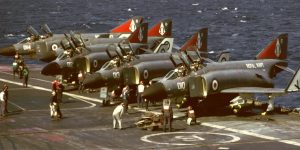 Bonus #1: The Empire Strikes Back
Bonus #1: The Empire Strikes Back
HMS Ark Royal, an Audacious-class aircraft carrier, was Britain’s last catapult flat-top to this day. Originally a WW2-era design, she was heavily modified (including the first-ever angled flight deck installed on a carrier) to operate Phantoms, Buccaneers and Gannet-AEWs throughout the 60s and 70s. She was retired in 1979.
In this hypothetical scenario, a service-life extension program (SLEP) in the mid/late-70s has granted a few more years of useful service to the old ship, and allowed her to join Hermes in lieu of the never-built Invincible in the Falklands campaign. As part of the SLEP, her obsolete Gannet-AEW aircraft have been replaced by modern E-2C Hawkeyes, and Seacat SAMs have been fitted to improve terminal defences.
The Ark Royal CVBG is now in the area of operations, and has been ordered to conduct strikes on the Argentine airfields in the Falkland islands.
This scenario has been enhanced with many “Fog of War” aspects; therefore expect the unexpected…
The Exocet strike that sunk HMS Sheffield confirmed the worst fears of the RN about the capabilities of this weapon, and its potential to disrupt (or even shut down entirely) operation Corporate. As a result, neutralizing this threat became a high priority, and several courses of action were considered.
One of them, called Operation Mikado, was a proposed plan to use Special Forces to infiltrate the Rio Grande airbase (in mainland Argentina) and destroy the Super Etendard aircraft hosted there together with their Exocet missiles. The initial concept was to land two C-130 Hercules on the runway, loaded with SAS troops, and perform an “Entebbe-style” lightning raid to destroy the aircraft & missiles. After the raid, surviving SAS members were to make their own way back via Chile if the Hercules were destroyed.
The plan was given an initial green light with caution, and as preparation for the raid, an advance SAS team landed on the Tierra del Fuego peninsula by Sea King helicopter, in order to recon the area and evaluate the feasibility of the C-130 plan.
Their report was mostly negative, and together with other developments Operation Mikado was shelved.
But what if other options on the table had been approved…?
Nerf Wars: On downgrading Russian systems & units in Command
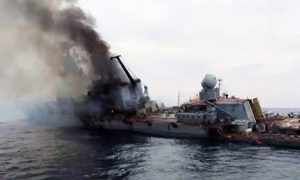 So, ever since it became clear that Russian combat performance in Ukraine has been “less than stellar”, there has been a persistent request in many corners of the web towards the Command dev team. The request can be summed up as:
So, ever since it became clear that Russian combat performance in Ukraine has been “less than stellar”, there has been a persistent request in many corners of the web towards the Command dev team. The request can be summed up as:
“So, when are you guys going to nerf Russian equipment in Command’s database, to match what we are seeing in Ukraine? It seems it is performing well below official specs.”
(Oxford Dictionary: “to nerf”: (of a video game developer) reduce the power of (a character, weapon, etc.) in a new instalment or update of a video game.)
A naval-oriented variant of this comment is: “I tried simulating the attack on the cruiser Moskva, and I just couldn’t sink it as happened it real life. So CMO is probably talking up Russian hardware.”
Now, there is a short and direct answer to both these claims, but we have been advised not to print it here. So let’s go into the more elaborate and slightly more polite version instead.
Command, by default (ie. stock DB values) represents Russian systems (and all other nation’s systems) as they are meant to be used, by trained crews employing them according to their design doctrine. Shortly after the Ukraine conflict got going for real, a US general remarked that “Russian hardware works pretty well… when used by Ukrainians”.
(As a quick example of this, Carlo Kopp had written an unusually insightful analysis on what happens when Russian SAMs get used correctly, and also what happens when they are not. Favorite quote: “The Syrians used mobile missiles in a fixed configuration; they put the radars in the valley instead of the hills because they didn’t want to dig latrines — seriously.”)
At the same time, Command also recognizes that combat is not a sterile hardware contest, and provides a lot of “soft factor” options (crew proficiency settings, reaction times, doctrine settings, EMCON, ROE etc.) to offer the ability to represent sub-optimal usage of said hardware. You can have two different units use exactly the same hardware with vastly different effectiveness and survivability (our favorite reference example is Iraqi 1991 SA-6 battery vs. Serbian 1999 SA-6 battery).
An example list of the factors you can edit:
- Proficiency levels, both side-wide and per-unit
- Reaction times (OODA loop values)
- Doctrine settings
- Rules of Engagement
- EMCON settings
- WRA settings (ie. firing doctrine)
- Per-component equipment failure
That very last aspect is particularly important in light of what has been recently learned WRT the system readiness on the Moskva. According to the leaked readiness report (standard caveat for CYA-shaped leaks), both the central SA-N-6 fire control radar and the short-range SA-N-4 systems were effectively disabled due to equipment malfunction and were waiting for replacements. In addition both the main guns as well as the main air-search radar were also inoperative. In other words, the Moskva was sent to an active warzone almost naked against air/missile attack.
Can this be faithfully reproduced in Command? Absolutely.
Can other factors, such as apparently poor crew proficiency which led to both poor reaction times and also abysmal damage control, also be modelled? Also yes, very easily so.
So why then do some CMO users out there find it so hard to reproduce results like the Moskva sinking? (Or the Saki airbase strike, or S-300/400 batteries not being omnipotent, or UAVs apparently roaming at will, or…)
TOUGH LOVE WARNING: Because some people’s idea of “testing something in the scenario editor” is to quickly plop down a few units here and there, in their stock-DB setups, give them free fire reign against each other, and call it a day. No customization for soft factors, component status or any of the other real-world aspects that directly impact the end result.
Thankfully, some players are disciplined enough to do it right. Here is an example, soon after the actual sinking itself when info was still scarce. (This of course is far from “the last word” on the subject. SMEs are still debating e.g. how the Sheffield went down after a single Exocet hit while the Stark survived two of them. Hell, even WW2 events are still up for analysis. It’s a safe bet that the Moskva sinking will be endlessly discussed by our grandchildren.)
It is tempting indeed, to embed the soft-factor issues directly into the DB entries themselves, so that when you spawn a Russian unit on the virtual battlefield, it’s in a sorry condition out-of-the-box, ready to be clobbered. The price you pay for this expedient approach becomes obvious only later, when you realize that not only you lost the ability to clearly separate man (and context/circumstances) from machine, but you also railroaded yourself intellectually into believing that this Russian unit will always behave like this.
Does this matter? Let us consider, for instance, an Israeli staff sergeant nerfing Egyptian tanks in a wargame just prior to Yom Kippur in 1973 “because they were such pushovers just a few years back”. Did this specific example happen? Maybe, maybe not; but we know for a fact that the Israeli military establishment grossly underestimated Egyptian & Syrian forces because of their lightning successes in 1967 (they essentially nerfed them in their mental “databases”), and that plenty of Israeli soldiers paid for that intellectual myopia with their lives. Is this a mistake we want (or can afford) to repeat?
Such a radical shift in combat effectiveness with identical/similar hardware does not happen just between conflicts, but also within the span of a conflict itself. Returning to Ukraine for an example, in the early days of the “rush for Kiev” we observed a lot of Russian SHORADS batteries getting bombed by aircraft while completely inoperative. As it turns out, apparently the rapid speed at which these elements were forced to move (to screen the assault forces) prevented them from properly screening/leap-frogging each other and thus actually operating as they are designed and supposed to do. When later these very same systems were properly echeloned with the forces they covered during the Russian withdrawal to Donbass (and also undeniably as the hard lessons of the first weeks were distilled to the surviving operators), their effectiveness and survivability were restored to expected levels. (And then the Ukrainians introduced HARMs in the theater… but that’s another story)
How can you represent such drastic differences in effectiveness in the very same unit, if the soft-factors are embedded in the database entry? Short answer: You can’t.
(Longer answer: You can cheat/hack your way into it by having multiple entries in the DB, each representing different competence levels and equipment maintenance. It’s a very hacky solution, a maintenance nightmare, and again you are mixing up man, machine and context. We sometimes were forced to do something like this back in the computer-Harpoon days, simply because Harpoon had absolutely no soft factors. Nowadays we can and must do better.)
So, to recap: We would be doing a grave disservice to both our commercial players and especially pro customers by directly embedding soft factors into the DB just so that Joe Player can get a realistically-degraded Moskva out of the box. Platforms and systems in the DB are spawned in pristine condition and (by default) are assumed to be crewed competently: This is not a design oversight, but a conscious and carefully-considered decision. Players can then modify the platforms themselves, turning them into anything from decrepit spank-targets all the way to invincible fortresses, and shape the context of the virtual environment in their favor or against them, in order to either recreate historical situations or explore hypotheticals of past, present or future. But in every case, it’s something that they will have to roll up their sleeves and do themselves. To quote Norm Koger from two decades ago: “Word processors ask a lot of those who would use them to create stories”.
Thanks, and carry on.
Command: Falklands announced
Community Scenario Pack #46: 18 new, 8 updated, 568 total!
 Following the release of the Showcase: Queen Elizabeth DLC, the Community Scenario Pack (CSP) is due for another refresh. Brandon Johnson (Kushan) has updated the pack to version #46, with updates & refreshes to 8 existing scenarios, as well as 18 brand-new creations. Let’s take a look:
Following the release of the Showcase: Queen Elizabeth DLC, the Community Scenario Pack (CSP) is due for another refresh. Brandon Johnson (Kushan) has updated the pack to version #46, with updates & refreshes to 8 existing scenarios, as well as 18 brand-new creations. Let’s take a look:
Arctic Tsunami, 2019: Hypothetical engagement between NATO and Russia in the Nord Kapp, Norway and Norwegian Sea area. NATO is slightly out of position with Russia having the advantage of concentration of force.
Baltic Fury 4 – Ride of the Valkyries, 1994: You are the commander the Soviet 15th Air Army. Your formation has deployed forward into advanced bases in Poland and has been resting for the past four days. With reinforcements you are tasked to conduct offensive strikes into Denmark in order to gain air and sea superiority over Jutland.
Baltic Fury 5 – Ivan’s March Across the Belts, 1994: This is the fifth and last scenario of the Baltic Fury campaign, and critical to the Northern Fury operations. You are the commander the Soviet 38th Guards Airborne Corps. Your light brigades and the Polish forces are to secure a corridor to Jutland. In a move similar to King Charles Gustav’s March across the Belts in 1658, you will rapidly seize a series of key points across the Great and Little Belts of the Danish Archipelago, allowing your two Airborne Divisions to concentrate on seizing the neck of Jutland while ensuring safe passage of your MRD to offloading ports on the mainland. Your deputy handed you a pirated copy of the film A Bridge Too Far as he departed your HQ for the final time. His protests had apparently attracted too much attention from the Zampolit.
Bear Island, 2022: BeirutDude’s final scenario for CMO. Your mission is simple, using your amphibious forces, take back Bear Island. Everything else is there to support that goal.
France Goes to Conakry, 1984: This scenario assumes that, shortly before the 1984 coup that took place in Guinea, both France and the Soviet Union moved forces into the area. Soviet intentions are unclear, but France is determined to protect the interests of its former colony.
Giving Some Hell to Harry, 2022: NATO responded with significant support to the Ukraine after massive Russian forces struck into the Donbass region. In response Putin launched attacks into the Baltic States and NATO honored its Article Five responsibilities. Carrier Strike Group Eight is in the Central Gulf of Mexico and was ordered to move west to neutralize the Russian bases and Integrated Air Defense System (IADS) in Syria. All that sits between them, and the eastern Med is the brand-new Russian Project 885M Yasen-M Class nuclear submarine Kazan (K-561).
Indian Fury 6 – Into the Breach, 1994: You’re commanding CTF 154 centered on the USS Saratoga CVBG and other forces in the Persian Gulf region. Your primary task is to transit the Straits of Hormuz in an effort to impress Saudi Arabia to commit to the conflict on our side. However, a critical secondary task is to ensure the safety of a major oil convoy heading to Europe, and of course tie down Soviet and Soviet aligned forces (primarily Iran) so they cannot interfere in other theatres. Finally, you must do all of this, while preventing the spread of the war and remaining disengaged from the parallel India/Pakistan conflict that is now raging.
Indian Fury 7 – Deep Strike, 1994: You are commanding the 366th Expeditionary Fighter Wing which is a unique organization in the USAF. You flew into Cairo about ten days ago and have been conducting missions in the Eastern Mediterranean and Red Sea areas since then. Tonight, is something different. This morning you had a phone call from the Chairman of the Joint Chiefs at the Pentagon, not something you expected. Apparently, the Soviets have been helping the Iranians with their nuclear program and the Israelis are more than a little uptight. Since Washington wants to keep Israel from acting independently and causing all sorts of problems with our Arab allies, we have been given a new tasking.
Iran Strike, 2022: In May 2022 Iran announced it would not sign any international agreement that limits its nuclear program and that it would begin developing nuclear weapons. Across the middle east contingency plans for such an event were about to be put into action. This scenario is designed as a sandbox to see what an Israeli, US, or combined strike on Iran might look like
NFZ Baltic; NFZ Med; NFZ Nordkapp; NFZ Pacific, 2022: Four-part scenario series where the NAC (North Atlantic Council), or political arm of NATO is debating the implementation of a No-fly Zone (NFZ) over Ukraine. Despite advice from military leaders that this will likely initiate a world war, several impassioned pleas by the Ukrainian President and the support of some NATO leaders may sway the vote.
Sudan Strike, 2025: In 2022 after a change in leadership caused by the 2021 coup and its aftershocks, and after a long series of negotiations, Sudan and Russia finally signed an agreement for the establishment of a Russian naval base at Port Sudan on the Red Sea coast. In May 2025 a small incident on the Korean peninsula has spiraled out of control into a global conflict. It was decided to give the Sudanese government an ultimatum to expel all Russian personnel. The Sudanese government has chosen to not accept any of the terms of the ultimatum. It has been decided to use military force to destroy the Russian base and any Sudanese forces that interfere.
Taiwan Straits, 2022: The PLAAF and PLA(N)AF are ordered to initiate the largest test of the Taiwan Area ADIZ to date. Hundreds of aircraft will be launched to test the Taiwanese resolve, including PLA(N)AF H-6G’s circumnavigating the Island from both the north and south.
The Battle of Al Khor, 1995: In 1995, there was a bloodless coup in Qatar. This scenario assumes that the military in Qatar was divided in its loyalties and the two factions fought for supremacy in the air and on the sea. Saudi Arabia is offering assistance to the faction loyal to the government at the time of the coup.
The Convoy, Ukraine, 2022: What if NATO actually put together a rapidly developed operation only using NATO airbases and aircraft in the Ukraine?
Vlakke Hoek, 1962: The battle of Vlakke Hoek was a naval engagement that took place on January 15th, 1962 during the West New Guinea (or West Irian) crisis between the Netherlands and Indonesia.
The new community scenario pack is, as always, available for download at the Command Team site: http://command.matrixgames.com/?page_id=1876 , and also on the Steam workshop.
The CSP now proudly counts 568 scenarios in its stable!




